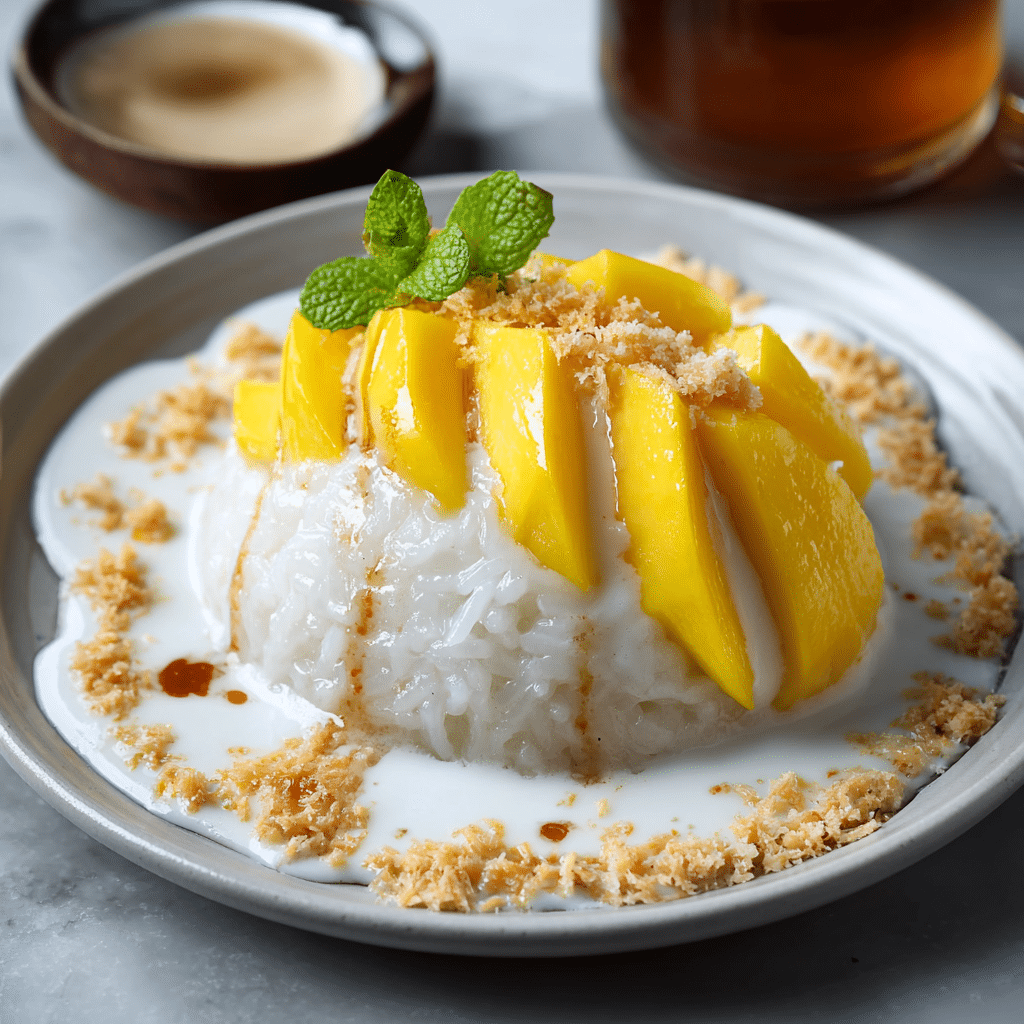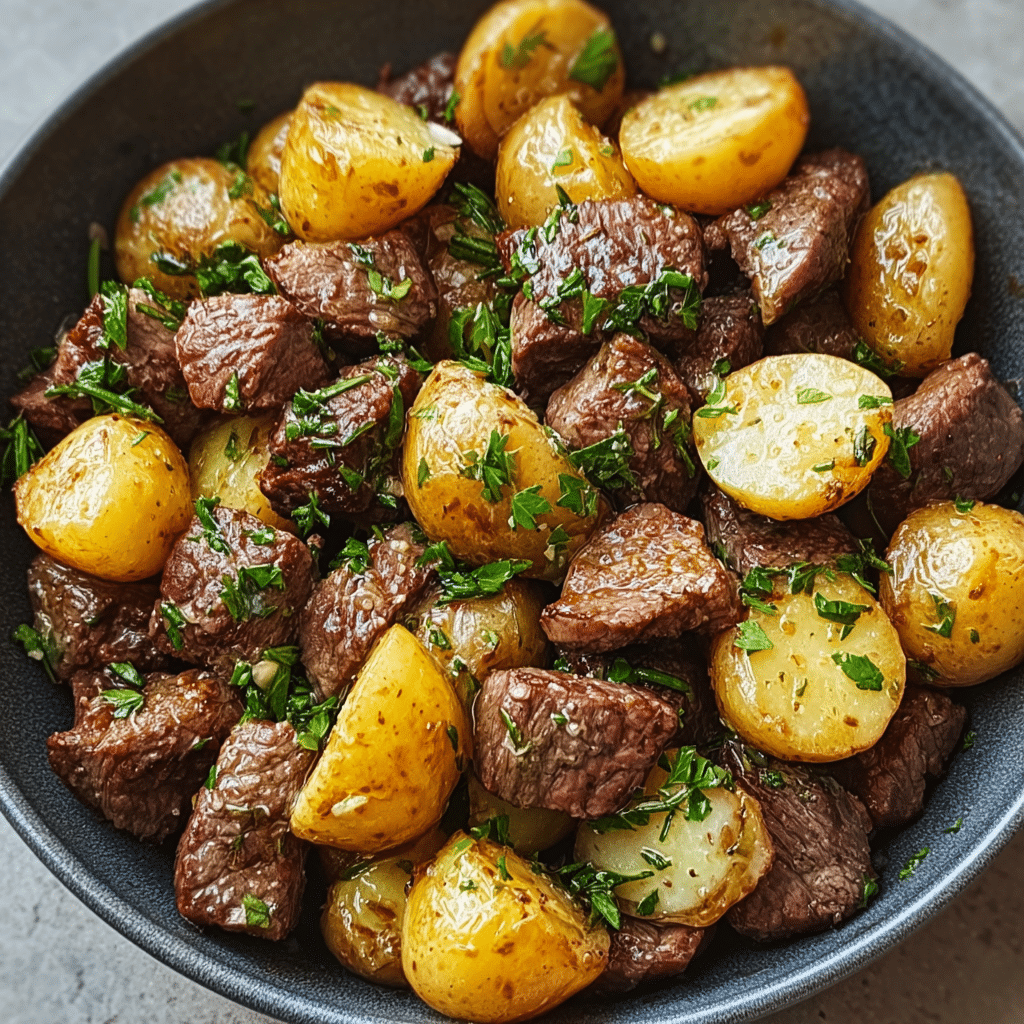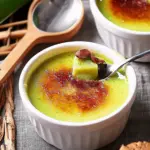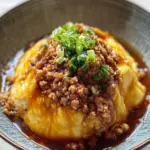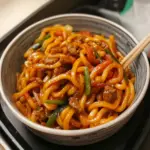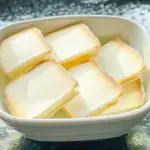The traditional Thai dessert, Mango Sticky Rice, is an iconic combination of creamy coconut-infused sticky rice and juicy, ripe mango slices. It’s a dish that perfectly balances the subtle sweetness of rice with the bright freshness of tropical fruit.
Often served at room temperature or slightly warm, this beloved sweet treat is comforting yet refreshing. Whether you’re celebrating mango season or just want something special to satisfy your dessert cravings, this dish is as simple to make as it is satisfying to eat. Drizzle it with coconut sauce, top with toasted sesame or mung beans, and enjoy a spoonful of sunshine.
Full Recipe
Ingredients:
-
1 cup glutinous (sticky) rice
-
1 1/3 cups water
-
1 1/3 cups coconut milk (divided)
-
5 tablespoons sugar (divided)
-
1/4 teaspoon salt
-
1 teaspoon cornstarch
-
2 ripe mangoes, peeled and sliced
-
Optional: toasted sesame seeds or mung beans for garnish
Directions:
-
Rinse the sticky rice under cold water until the water runs clear. Soak it in water for at least 4 hours or overnight.
-
Drain and steam the rice over boiling water for 20-30 minutes, or until fully cooked and translucent.
-
While the rice is steaming, combine 1 cup of the coconut milk with 3 tablespoons of sugar and the salt in a small saucepan. Heat over medium-low until sugar dissolves. Do not boil.
-
Once the rice is done, transfer it to a large bowl and slowly pour the sweetened coconut milk over it. Stir gently to mix. Let it sit for 20 minutes to allow the rice to absorb the liquid.
-
In another saucepan, mix the remaining 1/3 cup of coconut milk with 2 tablespoons sugar and cornstarch. Cook over low heat until it thickens slightly to a sauce consistency. Remove from heat.
-
Serve the sticky rice warm or at room temperature with sliced mango on the side. Drizzle with the thickened coconut sauce and sprinkle with toasted sesame seeds or mung beans if desired.
Prep Time: 10 minutes | Cooking Time: 30 minutes | Total Time: 40 minutes
Kcal: 350 kcal | Servings: 4 servings
Introduction to Mango Sticky Rice
Mango Sticky Rice, or Khao Niew Mamuang as it’s known in Thailand, is one of the most beloved desserts in Southeast Asia. It is a dish that perfectly captures the tropical essence of the region, combining the creamy richness of coconut-infused sticky rice with the fresh, juicy sweetness of ripe mangoes. This dessert is much more than just a sweet treat; it represents tradition, culture, and the beautiful harmony of flavors native to Thailand.
The dish is a popular street food staple as well as a festive favorite during the mango season. It’s commonly enjoyed during special occasions, holidays, and family gatherings. Mango Sticky Rice is often one of the first things travelers try when exploring Thai cuisine, and it leaves a lasting impression with its unique texture and flavor profile.
The Cultural Significance of Mango Sticky Rice
In Thailand, sticky rice is a staple food that is deeply rooted in everyday life, especially in the northern and northeastern regions. Sticky rice is traditionally cooked using a steaming basket, which allows it to become soft and chewy—ideal for pairing with savory or sweet dishes.
Mango Sticky Rice has cultural ties to harvest celebrations, particularly when the mango crop is ripe and abundant. The dessert is a way of honoring the bounty of nature and expressing gratitude. Sharing a bowl of mango sticky rice with family and friends symbolizes togetherness and joy.
While this dessert is most famously Thai, variations can be found throughout Southeast Asia, including Laos, Cambodia, and parts of Vietnam, where sticky rice is also a dietary mainstay. Each region offers slight twists in preparation, but the core ingredients of coconut, mango, and sticky rice remain central.
What Makes Mango Sticky Rice Unique?
Mango Sticky Rice stands apart from other desserts due to its unique combination of textures and flavors. The sticky rice, made from glutinous rice, has a distinctively chewy, dense texture that contrasts beautifully with the juicy softness of ripe mango. The rice is cooked with coconut milk, lending it a rich, creamy, and slightly sweet flavor.
The coconut milk mixture not only adds richness but also moistens the rice, giving it a luscious mouthfeel. The subtle saltiness added to the coconut milk enhances the overall flavor balance, making the sweetness of both the rice and mango more pronounced.
Unlike many desserts that rely heavily on sugar or artificial flavors, Mango Sticky Rice highlights the natural sweetness of fresh mangoes, complemented by the gentle sweetness of coconut milk. This creates a dish that is refreshing, yet indulgent without being overly heavy.
Choosing the Right Mango
The success of Mango Sticky Rice largely depends on the quality and ripeness of the mango. The ideal mango for this dish is sweet, fragrant, and slightly soft, but not mushy. In Thailand, the Nam Dok Mai mango is the preferred variety due to its sweet, floral aroma and buttery texture.
If you are making this dessert outside of Thailand, try to find mangoes that are ripe and juicy. Varieties like Ataulfo, Kent, or Honey mangoes are excellent substitutes, as they offer similar sweetness and texture.
Avoid mangoes that are underripe and tart or overly soft and fibrous, as they won’t complement the creamy rice properly. The mango should be peeled and sliced just before serving to maintain its freshness and vibrant color.
Health Benefits and Nutritional Value
While Mango Sticky Rice is undeniably a treat, it also contains nutritional benefits thanks to its simple, natural ingredients. Coconut milk provides healthy fats, specifically medium-chain triglycerides (MCTs), which are easier to digest and have been associated with energy-boosting properties.
Mangoes are rich in vitamins A, C, and E, as well as antioxidants and fiber, which contribute to good digestion and immune health. Sticky rice, while mainly a source of carbohydrates, offers energy and is gluten-free, making this dessert suitable for those with gluten sensitivities.
However, because it contains coconut milk and sugar, Mango Sticky Rice should be enjoyed in moderation as part of a balanced diet. It offers a wholesome alternative to many processed desserts laden with artificial ingredients.
Variations and Serving Suggestions
Although the classic Mango Sticky Rice recipe is beloved worldwide, there are creative variations that can add exciting twists to the traditional preparation. Some people like to add toasted mung beans or sesame seeds on top for added texture and a nutty flavor.
Others incorporate pandan leaves into the coconut milk infusion for a fragrant, floral note. Some variations use a pinch of salt or even a splash of vanilla to deepen the flavor profile.
For a more indulgent version, small cubes of coconut jelly or fresh coconut meat can be served alongside the sticky rice and mango slices. Some modern chefs even serve this dessert chilled or as a frozen treat during hot weather, making it a refreshing summer dessert.
Tips for Making the Best Mango Sticky Rice at Home
Perfecting Mango Sticky Rice at home is easier than many think. The key lies in properly soaking and steaming the sticky rice, ensuring it cooks evenly and becomes tender without turning mushy. Using a steamer rather than boiling keeps the rice grains intact and preserves their chewy texture.
When preparing the coconut milk mixture, gently warming it to dissolve sugar without boiling is essential, as boiling can cause the milk to separate and lose its creaminess.
Allowing the cooked sticky rice to absorb the coconut milk mixture fully is critical to achieving the rich, creamy texture that defines this dessert. Resting the rice with the coconut milk for about 20 minutes before serving allows for maximum flavor absorption.
Lastly, serving the sticky rice warm or at room temperature alongside perfectly ripe mangoes and the thickened coconut sauce ensures the best taste and experience.
Conclusion
Mango Sticky Rice is a shining example of how simple ingredients can come together to create something truly extraordinary. It’s a dish that celebrates tropical flavors, Thai culinary traditions, and the joy of sharing sweet moments with others.
Whether you’re a seasoned chef or a home cook exploring global cuisines, this dessert offers a wonderful balance of creamy, sweet, and fresh elements that are sure to delight your palate. Its versatility allows for endless personalization, from garnishes to mango varieties, making it an ideal recipe to keep coming back to.
Incorporating Mango Sticky Rice into your recipe repertoire not only broadens your culinary horizons but also connects you to a rich cultural history that values natural ingredients and balanced flavors. Give this classic dessert a try—you’ll be rewarded with a bowl full of sunshine, tradition, and happiness in every bite.

